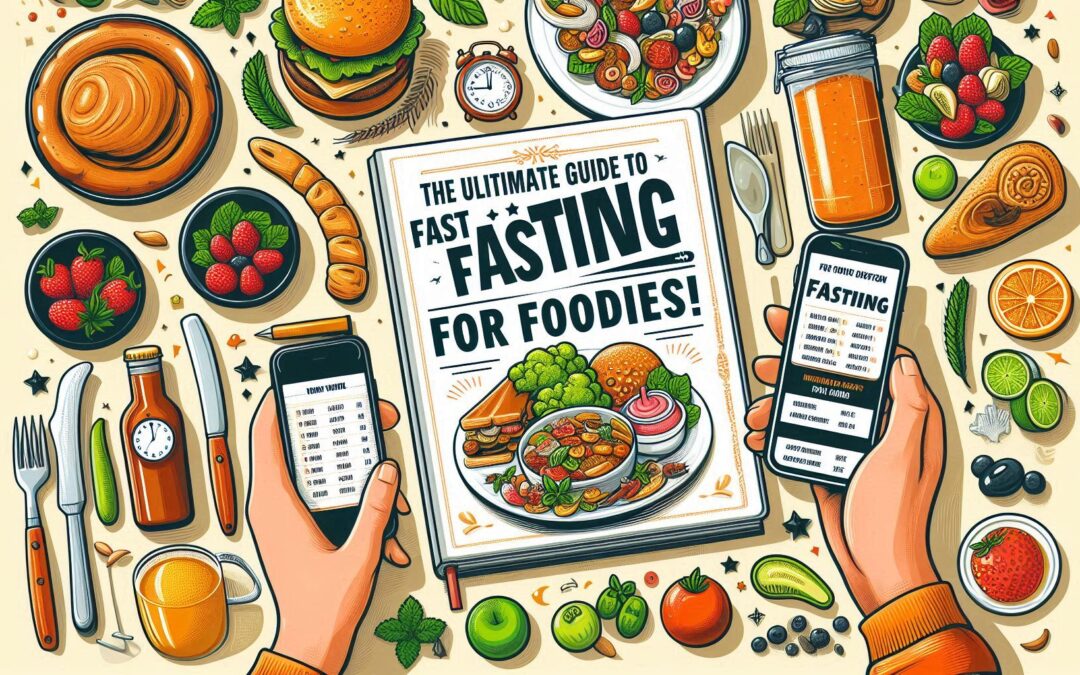Fasting for Foodies!
Intermittent fasting (IF) has swept the health world by storm, gaining popularity as a flexible and effective approach to weight management, health improvement, and even longevity. For foodies—the passionate, flavour-seeking, cuisine-loving crowd—this can be both a curious and daunting approach.
How does one restrict eating yet still embrace the joy of food? Well, here’s the ultimate guide to intermittent fasting designed specifically for those who love food, covering fasting types, tips, benefits, frequently asked questions, and more.
What Is Intermittent Fasting?
At its core, intermittent fasting is a structured eating approach where you alternate between periods of eating and fasting. Unlike traditional diets that focus on what to eat, intermittent fasting concentrates on when to eat.
And guess what? This approach can actually enhance your relationship with food, making each meal something to look forward to.

You’re a ‘Foodie’ then?
For foodies—people who take great pleasure in eating and exploring new cuisines—dieting and intermittent fasting often bring unique challenges.
Here’s what the common experience might look like for a foodie approaching intermittent fasting, along with specific struggles they might face:
1. Love for Culinary Exploration vs. Restricted Eating Times
Foodies thrive on variety, trying new foods, and experimenting with recipes. The eating restrictions in intermittent fasting can make them feel like their food adventures are limited to a smaller window, which can feel confining.
They may miss out on food experiences that don’t align with their fasting schedule, like spontaneous food trips or late-night dining.
2. Emotional and Sensory Connection to Food
For foodies, food isn’t just fuel; it’s an experience filled with sensory enjoyment, creativity, and even emotional fulfilment. Fasting can feel like they’re being deprived of something they genuinely love, making the restriction feel heavier than for others who have a more practical relationship with food.
The desire to savour food can create an urge to overindulge once the eating window opens, making it harder to stay on track.
3. Social Pressures and Food-Related Gatherings
Foodies are often enthusiastic participants in social events involving food—whether it’s a brunch with friends, a family feast, or a new restaurant opening. Fasting windows or dietary restrictions can make these gatherings challenging or even isolating if they’re not able to fully participate.
For foodies, declining a shared meal or modifying dishes can feel like missing out on a special social ritual.
4. Fear of Losing the Joy in Food
Because intermittent fasting can require planned and sometimes repetitive meals, foodies may fear that fasting will make food feel routine, less exciting, or too restrictive.
The focus on eating for nourishment within a specific time can sometimes dampen the playful and explorative aspect of food that they love, leaving them feeling that fasting may take away the joy they associate with eating.
5. Struggle with the Idea of “Restriction”
Foodies often have a passion for abundance and variety in their diets. The concept of “restriction,” even if it’s just time-based, can feel psychologically challenging, triggering a sense of deprivation that makes fasting windows feel longer or more arduous.
This can lead to a counterproductive focus on food and anticipation of the eating window, which could increase cravings rather than reduce them.
6. Risk of Overindulgence in the Eating Window
Because foodies tend to look forward to meals and eating experiences, they may feel an inclination to eat larger quantities during the eating window to compensate for the fasting hours.
This “feast” mentality can lead to overeating or focusing on rich, indulgent foods rather than balancing their meals, which may interfere with weight management or metabolic benefits they’re hoping to achieve.
7. Navigating Balance Between Health Goals and Enjoyment
A foodie’s deep appreciation for food can make it challenging to maintain a balanced approach between intermittent fasting and truly enjoying their meals.
They might worry about how to satisfy both their health goals and their passion for food without feeling like they’re sacrificing one for the other.
Finding harmony between fasting and enjoying rich, varied foods without feeling guilty can be a tough balance to strike. In this guide we will open you to the world of intermittent fasting, on your terms!

Why Intermittent Fasting Works for Foodies
One of the greatest benefits of intermittent fasting for foodies is that it can reduce the need for calorie counting, portion control, or restrictive dieting.
It creates a natural framework that can lead to mindful eating, enabling you to fully savour and enjoy your meals without the constant stress of dieting.
Here’s what makes intermittent fasting foodie-friendly:
- Enhanced Flavour Appreciation: When you fast, your taste buds often become more sensitive, so food tastes more vibrant and satisfying.
- Freedom to Eat Favourite Foods: With an IF approach, you don’t have to say goodbye to beloved treats or favourite dishes.
- Flexibility in Timing: The flexibility of fasting windows allows foodies to adapt their eating schedules to social meals or special culinary experiences.

Different Types of Intermittent Fasting
1. 16:8 Method
This is one of the most popular fasting methods, involving a 16-hour fast with an 8-hour eating window. For example, if you start eating at noon, your last meal should be at 8 PM.
This method is particularly popular as it still allows two full meals and an optional snack during the eating window.
2. 5:2 Diet
In the 5:2 approach, you eat normally for five days and restrict your calorie intake to around 500–600 on two non-consecutive days.
This method is appealing because you only need to fast for two days, making it easy to plan around social events or food outings.
3. Eat-Stop-Eat
This method involves fasting for a full 24 hours once or twice per week. While challenging, it can work well for some people, particularly if the fasting days are planned on less active days.
4. Alternate-Day Fasting
A more advanced version, this involves eating normally every other day and fasting in between. This may suit people who don’t mind a more regimented schedule.
5. Warrior Diet (20:4)
This involves fasting for 20 hours and eating in a 4-hour window. Many use this approach to enjoy a big, satisfying meal.
It works well for foodies who like the idea of a feast but may not be for everyone, as it requires a long fasting period each day.

The Magic 16!
The 16-hour fasting period has gained popularity because it’s a duration that strikes a balance between accessibility and effectiveness, making it feasible for many people to integrate into their routines. Here’s why the 16-hour fast is considered beneficial:
1. Reaching the Fat-Burning Zone
After about 12 hours of fasting, the body’s glycogen stores (stored glucose) begin to deplete. When this happens, the body shifts to burning stored fat for energy, a metabolic state known as “fat adaptation.”
Extending the fast to 16 hours means the body spends more time in this fat-burning mode, which can aid in weight management and fat loss.
2. Triggering Autophagy
Around the 16-hour mark, the body may begin a process called autophagy. This is a cellular “cleanup” mechanism where damaged cells and proteins are broken down and recycled, supporting cell renewal and potentially reducing aging markers.
Autophagy helps the body function optimally and may reduce risks of diseases associated with aging. While autophagy levels can vary by individual and fasting frequency, the 16-hour window gives many people a realistic way to stimulate this process.
3. Balanced and Practical for Most People
The 16:8 fasting method (16 hours of fasting, 8 hours of eating) is practical because it allows people to enjoy a reasonable eating window, fitting in two full meals and a snack if desired.
For example, someone could start eating at noon and finish their last meal by 8 PM, allowing for social dinners and a sufficient calorie intake. Many find that this schedule is easier to stick to than longer fasts and helps avoid the pitfalls of extended fasting, like low energy or strong hunger.
4. Supporting Metabolic Health
Regular 16-hour fasts may help regulate blood sugar levels and improve insulin sensitivity, which is crucial for metabolic health. By limiting the hours in which one consumes food, the body can avoid constant insulin spikes, which may improve insulin response and help with weight management over time.
For people prone to blood sugar fluctuations, the 16-hour fasting period can provide a balanced rhythm that supports metabolic health without intense restrictions.
5. Consistency and Routine
Fasting for 16 hours is long enough to yield noticeable health benefits while being short enough to fit into a regular routine, making it sustainable in the long run.
Because consistency is key to seeing health improvements from intermittent fasting, the 16-hour window allows for a realistic fasting schedule that many people can commit to without feeling overly deprived.
In short, 16 hours is considered a “magic” number because it’s long enough to trigger fat burning, promote cellular repair, support metabolic health, and balance meal timing with everyday life—making it one of the most accessible and effective fasting windows for most people.
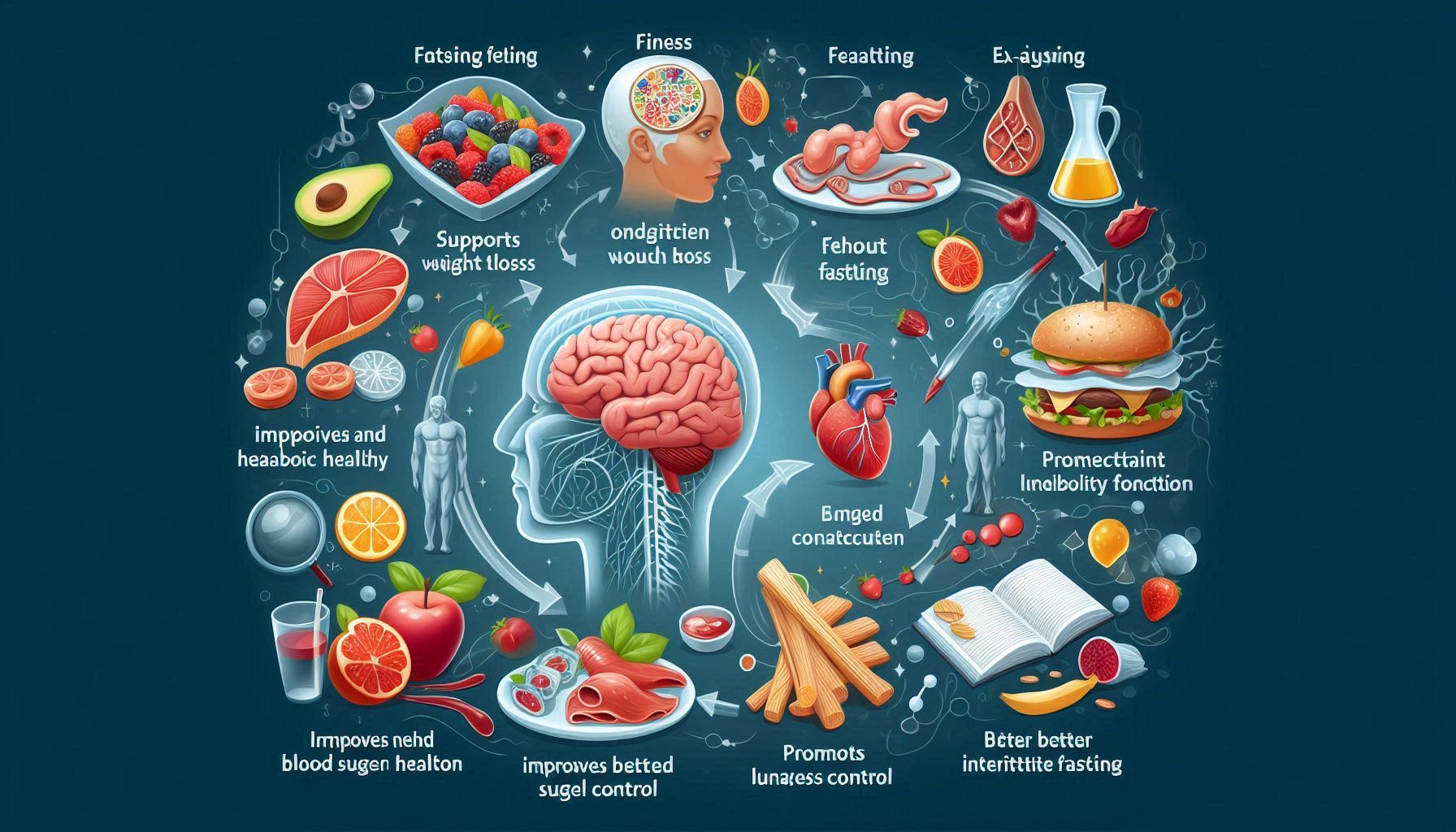
The Benefits of Intermittent Fasting
1. Supports Weight Loss and Metabolic Health
Intermittent fasting can boost metabolic rate, leading to an increased calorie burn, and reduce insulin levels, which helps burn fat more effectively. For people of all ages, IF is an excellent way to achieve and maintain a healthy weight.
2. Promotes Longevity and Anti-Aging
Studies suggest that intermittent fasting triggers cellular repair processes and may help reduce oxidative damage. This has long-term benefits for aging and health, making it a powerful addition to longevity and anti-aging strategies.
If you’re interested in going deeper into the secrets of longevity, check out the course ‘Discover the Secrets to Longevity and Anti-Aging’ at the end of this article.
3. Improves Cognitive Function
Regular intermittent fasting may boost brain health and protect against neurodegenerative diseases. It can increase the production of BDNF (Brain Derived Neurotrophic Factor), a protein linked to cognitive function and memory.
This can be particularly beneficial for older adults aiming to maintain mental clarity.
4. Better Blood Sugar Control
For both men and women, intermittent fasting has been shown to improve blood sugar regulation, making it beneficial for people with insulin resistance or type 2 diabetes.
However, anyone with diabetes should consult their doctor before trying intermittent fasting.
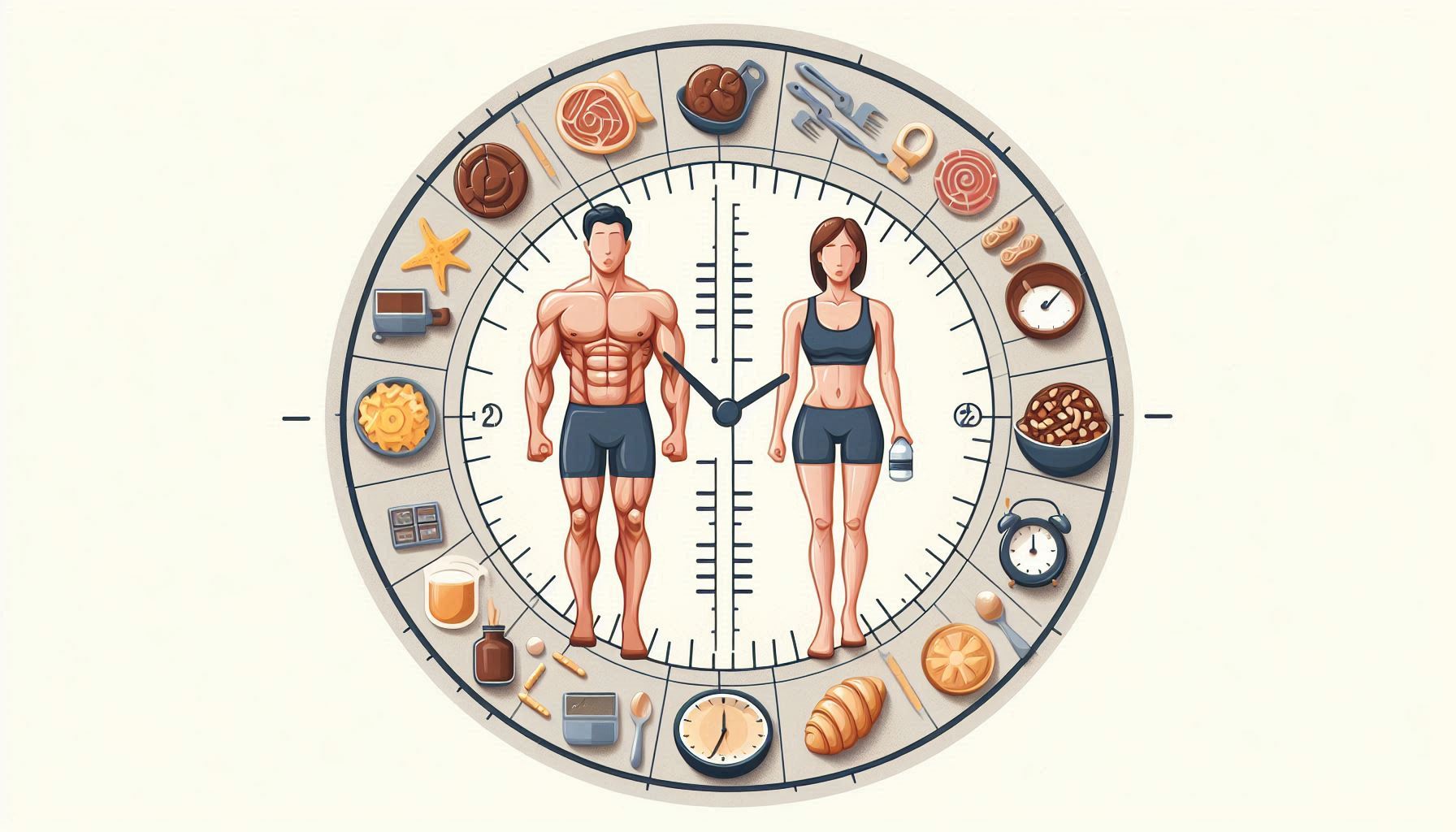
Intermittent Fasting for Men and Women: Key Considerations
For Women:
Women’s hormonal cycles are often more sensitive to fasting. Here are a few tips for women:
- Start Slow: Begin with a 12:12 approach, gradually moving to 14:10 or 16:8 if your body feels comfortable.
- Track Menstrual Health: Some women may experience disruptions in their menstrual cycle with prolonged fasting.
- Listen to Your Body: Notice if there are any signs of stress, such as irregular periods, mood swings, or sleep disturbances.
For Men:
Men generally find intermittent fasting easier to maintain due to fewer hormonal fluctuations.
- Fitness Goals: Men aiming for muscle gain can benefit from the 16:8 or 14:10 method, allowing them to fit in ample calories and protein.
- Performance and Strength: Men’s metabolism typically responds favourably to IF without the risks of hormonal imbalances, making it a good option for enhancing physical performance.
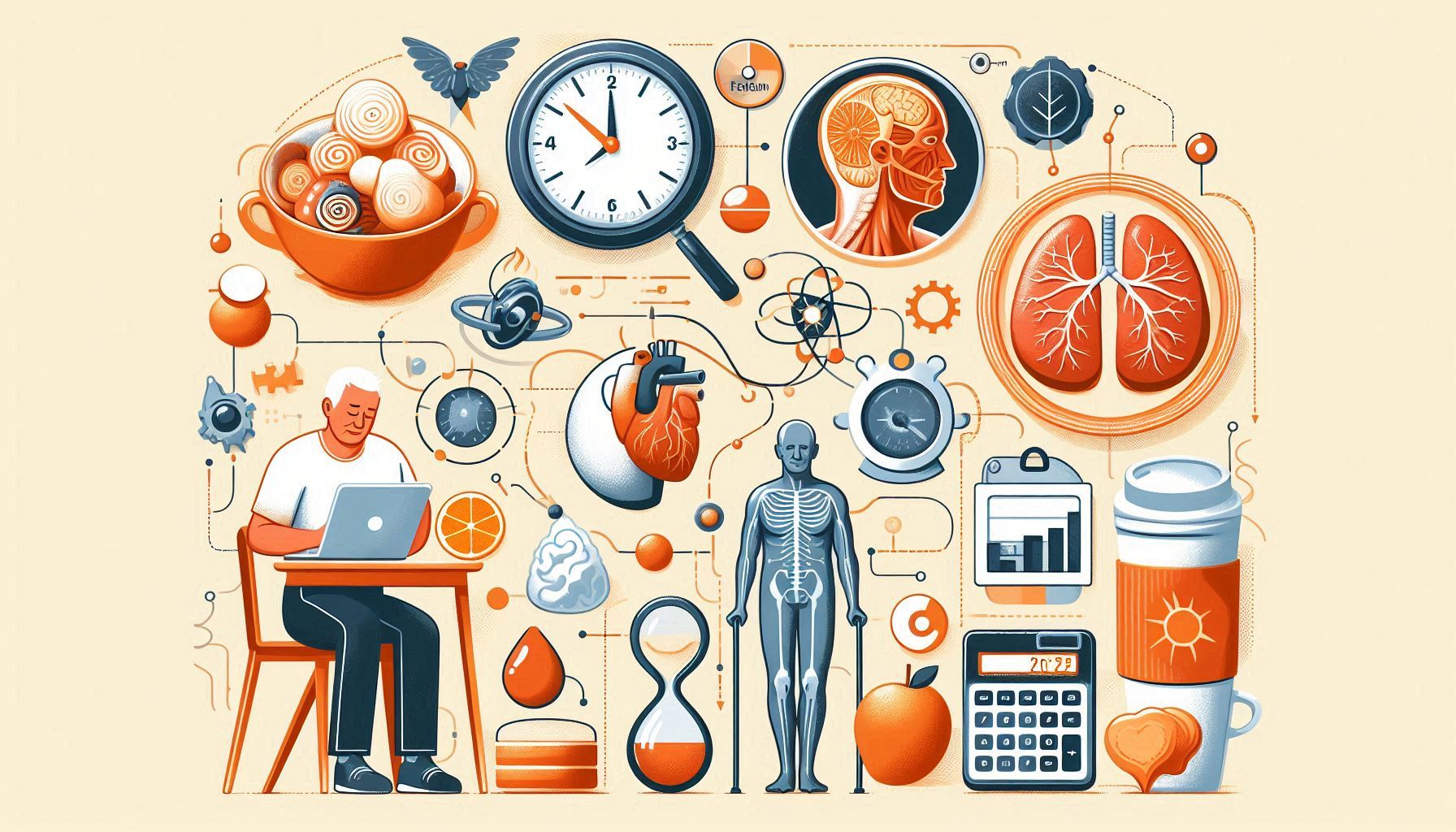
Intermittent Fasting for Older Adults
Intermittent fasting can be beneficial for older adults, supporting goals like improved metabolic health, weight management, and cellular repair.
However, as we age, our nutritional needs and bodies change, so it’s essential to approach fasting thoughtfully to ensure it’s safe and effective.
1. Benefits of Fasting for Older Adults
- Enhanced Metabolic Health: Intermittent fasting may help manage blood sugar levels, improve insulin sensitivity, and reduce the risk of age-related diseases like Type 2 diabetes and cardiovascular issues.
- Support for Cellular Health: Fasting can promote autophagy, a process that clears out damaged cells, potentially reducing the effects of aging and supporting brain health.
- Weight Management: For older adults looking to maintain a healthy weight, fasting can reduce overall calorie intake without strict dieting, which may be easier on digestion and reduce inflammation.
2. Special Considerations
- Nutritional Intake: Older adults have higher protein and nutrient needs to prevent muscle loss and support bone health. It’s essential to consume nutrient-dense meals during the eating window, focusing on high-quality proteins, calcium-rich foods, leafy greens, and healthy fats.
- Avoiding Malnutrition: Fasting may reduce the total amount of food consumed, which can lead to unintentional calorie restriction. Older adults should focus on nutrient-dense foods to ensure they’re meeting their nutritional needs and consult a nutritionist if needed.
- Adjusting Fasting Windows: Many older adults find a 12:12 or 14:10 fasting schedule more sustainable than longer fasts, as these options support balanced energy without prolonged food restriction. Starting with shorter fasting periods can help make fasting manageable and avoid any potential discomfort.
- Monitoring Hydration: Dehydration is a common risk as we age, and it’s essential to stay well-hydrated while fasting. Drinking water regularly throughout the day is crucial, especially if fluid intake tends to decrease with age.
- Maintaining Muscle Mass: Muscle loss is a natural part of aging, so older adults should focus on strength training and protein intake, especially within the eating window, to support muscle preservation and prevent frailty.
3. Safe Fasting Tips for Older Adults
- Ease into Fasting: Begin with a shorter fasting period, such as 12 hours, and increase gradually as your body adjusts. This is especially important if you’re new to fasting.
- Listen to Your Body: If fasting causes dizziness, fatigue, or irritability, adjust the fasting window or consider taking a break. Older adults often need more time to adapt to new dietary patterns.
- Consult with a Healthcare Provider: If you have existing health conditions, take medications, or have specific dietary needs, it’s best to consult with a healthcare provider before starting intermittent fasting. This is particularly important for conditions like diabetes, which require careful blood sugar management.
- Focus on Balanced, Nutritious Meals: Within the eating window, aim for balanced meals that include proteins, whole grains, vegetables, and healthy fats. This will support energy, muscle health, and overall well-being.
Intermittent fasting can offer various health benefits for older adults, but it’s not suitable for everyone. Adjusting fasting times, focusing on nutrient-rich foods, and paying close attention to how you feel are essential to fasting safely.
If done mindfully, fasting can be a helpful tool to promote longevity, manage weight, and support metabolic health while adapting to the body’s changing needs as we age.
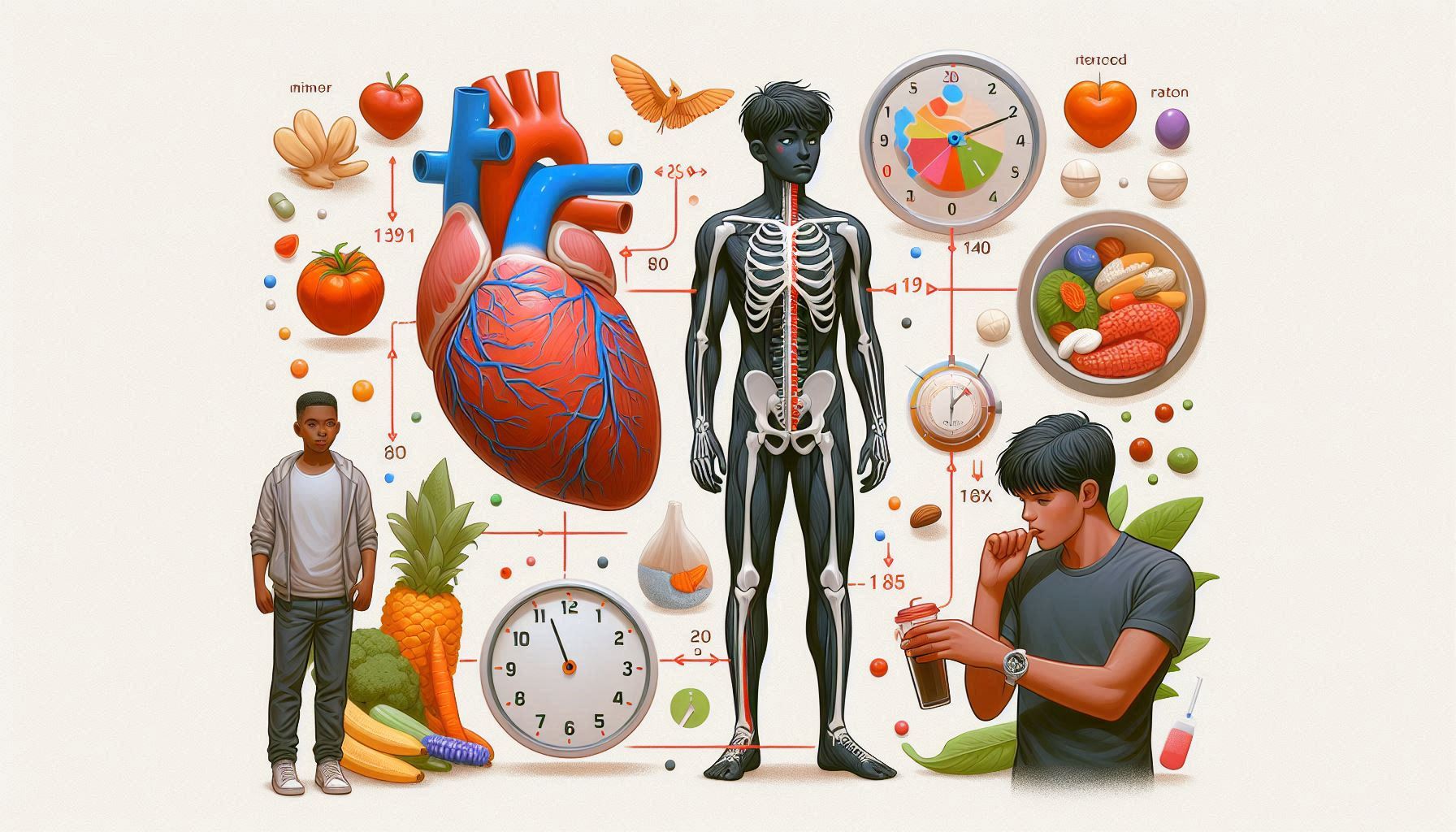
Should Young People Use Intermittent Fasting?
Yes, young people can use intermittent fasting (IF), but it should be approached carefully and with consideration of their unique nutritional needs, developmental stage, and lifestyle.
For teenagers and young adults, the body is often still developing, requiring consistent nutrients to support growth, brain development, and activity levels.
Here are key factors to consider:
1. Nutritional Needs and Growth
Young people, especially teenagers, have high energy needs due to rapid physical and mental development. A balanced intake of calories, protein, healthy fats, vitamins, and minerals is essential for growth and cognitive health.
Long fasting windows could unintentionally restrict their access to these necessary nutrients, so they must be cautious with restrictive patterns like 24-hour fasting or very small eating windows.
2. Managing Appetite and Hormones
Young bodies are sensitive to hormonal changes, and fasting may impact hunger-regulating hormones like ghrelin and leptin. For some, this could lead to extreme hunger after fasting, making it difficult to follow balanced eating or even sparking cycles of overeating and undereating.
Short fasting windows, like a 12:12 (12-hour fast and 12-hour eating window), are often easier for young people to manage and provide the benefits of fasting without risking hormone disruption.
3. Energy for Activity and Academic Demands
Many young people are physically active or have demanding schedules that require energy throughout the day. Extended fasting periods can sometimes leave them feeling fatigued or low in energy, which can affect sports performance or concentration at school.
For young people, keeping to moderate fasting practices or flexible approaches (like eating normally on school days and fasting on less busy days) may be more sustainable.
4. Developing a Healthy Relationship with Food
Intermittent fasting can work well if it encourages a mindful relationship with food and doesn’t create feelings of restriction.
However, if a young person becomes overly focused on fasting windows or skips meals to follow IF strictly, it could lead to an unhealthy mindset around eating. It’s crucial for young people to approach fasting as an option, not a rule, and to remain flexible with it.
5. Recommendations and Supervision
Young people interested in intermittent fasting should consider starting with mild approaches, such as a 12:12 or 14:10 schedule. Consulting with a nutritionist, especially if they have high activity levels or specific health needs, can ensure that IF complements their lifestyle healthily.
Intermittent fasting can be safe for young people if done mindfully and with shorter fasting periods, allowing flexibility to accommodate their growing bodies’ nutritional and energy demands.
A gentle, balanced approach helps young people gain the benefits of fasting without compromising their health or relationship with food.
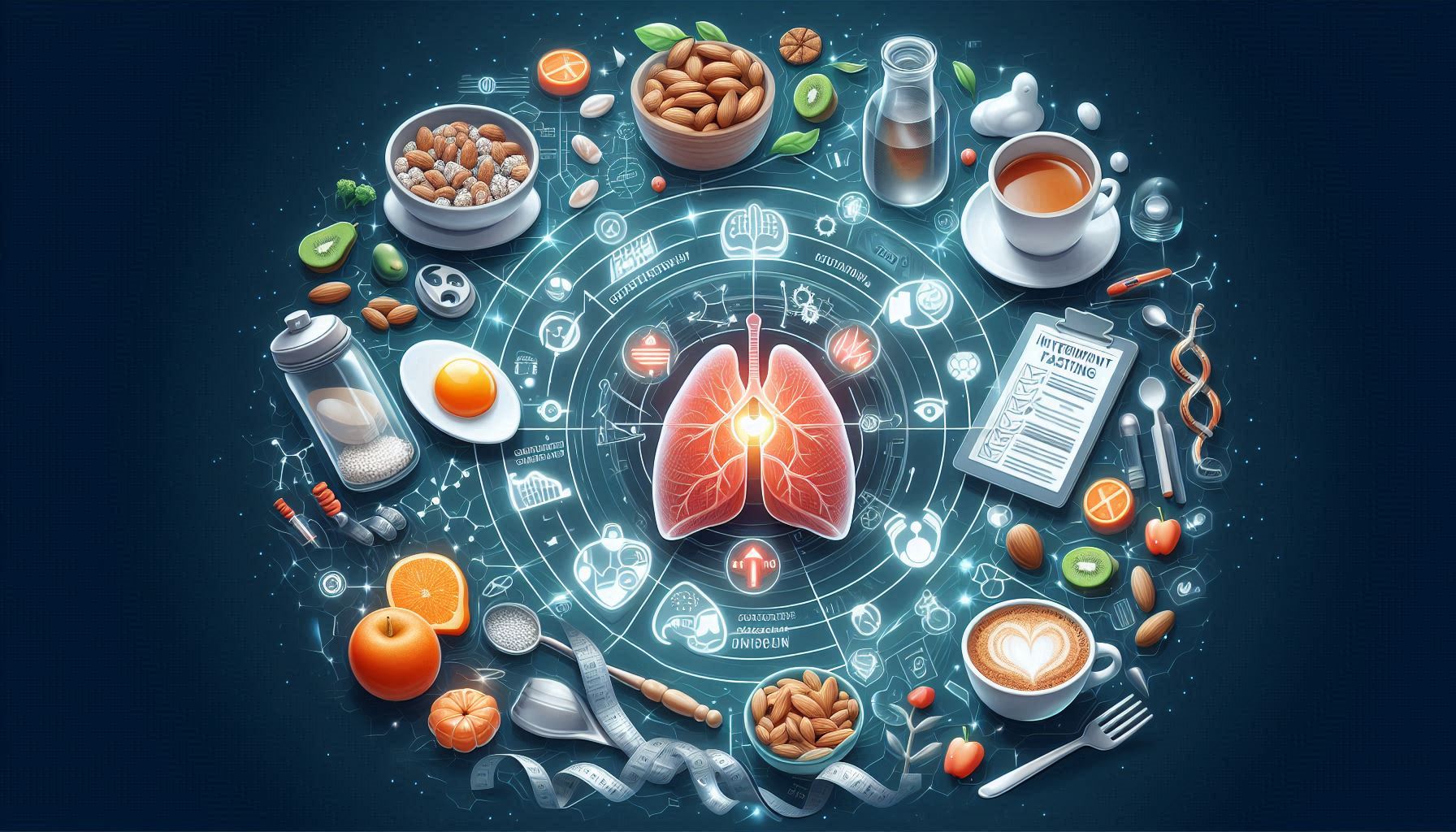
How to Fast Safely
Fasting can provide a range of health benefits, but it’s essential to approach it safely to avoid unwanted side effects. Here’s how to fast safely:
1. Start Gradually
If you’re new to fasting, start with shorter fasting windows (e.g., 12 hours) before extending to longer periods like 16 or 18 hours. Gradual adjustment allows your body to adapt to fasting and reduces the likelihood of feeling overly hungry or fatigued.
2. Stay Hydrated
Hydration is crucial during any fast, as it helps support energy levels, reduces headaches, and prevents dehydration. Water, herbal tea, and black coffee (without added sugars or milk) are generally safe to drink and don’t break a fast. Aim for at least 8–10 glasses of water daily, especially on fasting days.
3. Focus on Balanced Eating During the Eating Window
During your eating window, prioritise nutrient-dense foods that keep you full and support overall health. Include a balance of lean proteins, healthy fats, fibre-rich vegetables, and whole grains. Avoid processed foods, which can lead to blood sugar spikes and dips, causing more hunger and cravings.
4. Don’t Overeat in the Eating Window
While it’s tempting to “make up for” the fasting period, overeating in your eating window can make fasting more difficult and counteract health goals. Try to eat mindfully, focusing on the quality of food rather than quantity, and aim to eat only until you’re satisfied.
5. Listen to Your Body
Fasting is not one-size-fits-all, and everyone’s body responds differently. If you start to feel lightheaded, dizzy, excessively tired, or irritable, it may be a sign that your fasting window is too long. Adjust your fasting times if needed, and consider taking a break from fasting when your body needs it.
6. Avoid Intense Exercise While Fasting
Exercise can be part of a fasting routine, but high-intensity workouts during a fasting window can increase fatigue and stress on the body. Instead, consider lighter forms of activity, such as walking or yoga, during the fast, and reserve more intense workouts for your eating window.
7. Maintain a Regular Sleep Schedule
Good sleep is essential for health and can support a successful fasting routine. Lack of sleep can increase hunger hormones, making fasting more challenging. Aim for 7–8 hours of quality sleep to help regulate hunger and energy levels.
8. Don’t Fast if You’re Unwell
Fasting while sick or during periods of physical or emotional stress can add strain to the body. If you’re unwell, prioritise rest, hydration, and balanced nutrition rather than fasting.
9. Consult a Health Professional if You Have Health Conditions
Certain health conditions—such as diabetes, low blood pressure, or pregnancy—can be impacted by fasting. If you have any medical conditions or are on medication, consult with a healthcare provider before starting a fasting routine.
10. Be Flexible
Fasting works best when it’s adaptable to your life. You don’t need to fast every day; flexible fasting schedules (like fasting a few days per week) can still offer benefits without causing undue stress.
Adjust your fasting routine to fit your lifestyle, social events, and personal needs.
Fasting safely is about listening to your body, taking a gradual approach, and prioritising hydration and balanced nutrition. This way, you can reap the health benefits of fasting while protecting your wellbeing.
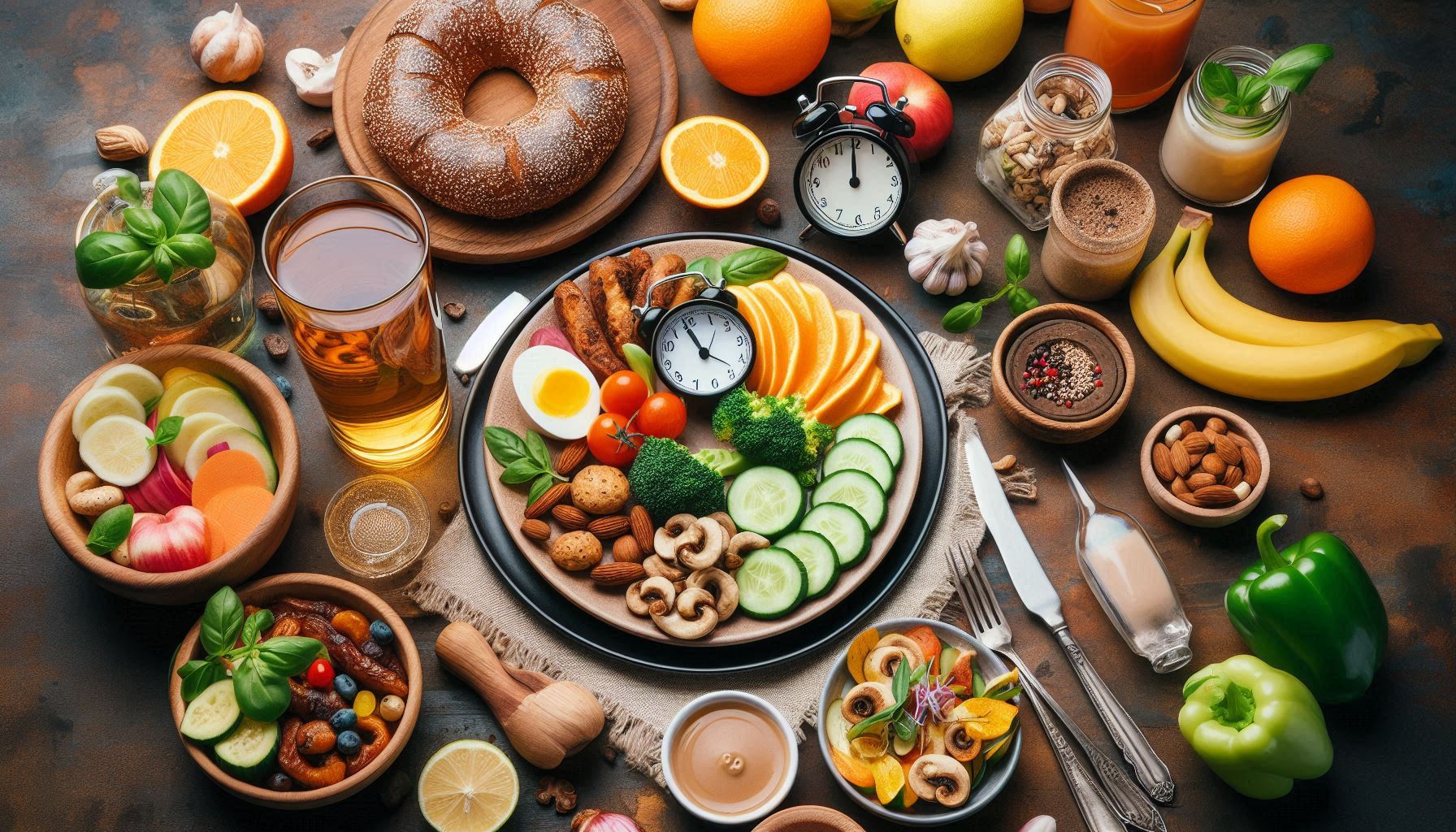
Fasting Tips for Foodies: How to Enjoy Food While Fasting
Being a foodie doesn’t mean you have to give up the pleasures of eating. Here’s how to balance your love for food with intermittent fasting:
1. Plan for Quality Over Quantity: By focusing on high-quality, flavourful ingredients, you can make each meal feel like a treat.
2. Embrace the Feast: Use your eating window to create enjoyable, satisfying meals. Think of it as a daily culinary event.
3. Celebrate Flavours: Fasting enhances your taste sensitivity, so explore spices, herbs, and unique flavour combinations.
4. Slow Down and Savour: Intermittent fasting encourages mindfulness around food. Enjoy each bite fully, and savour the textures, aromas, and flavours.
5. Try New Recipes: Use your eating window as an opportunity to experiment with recipes that excite your taste buds.

The Long-Term Benefits of Intermittent Fasting
When embraced mindfully, intermittent fasting offers a range of long-term health benefits. From weight management to enhanced mental clarity, fasting can improve overall health and quality of life.
And if longevity is a goal, fasting may just be one of the best-kept secrets. To learn more about how to incorporate intermittent fasting into a life of vitality and anti-aging, you can explore our comprehensive course ‘Discover the Secrets to Health, Longevity and Anti-Aging’.
Final Thoughts and Your Call to Action
Intermittent fasting is a flexible, science-backed approach to eating that can align beautifully with a foodie lifestyle.
Whether your goal is to lose weight, boost energy, or promote longevity, fasting offers a chance to rediscover a mindful and balanced relationship with food.
For foodies, fasting can be both exciting and challenging, as their love for culinary exploration, social dining, and sensory pleasure may sometimes clash with fasting’s structure.
However, by experimenting with different fasting styles and adopting flexible schedules, focusing on quality over quantity, and planning creative, satisfying meals, foodies can enjoy the benefits of intermittent fasting while keeping the joy and excitement that food brings to their lives.
If you’re ready to dive deeper into a lifestyle that supports both wellness and vitality, join us in our ‘Discover the Secrets to Health, Longevity and Anti-Aging’ course today and continue your journey to optimal health and a longer, more vibrant life!
Dr Tom Barber is a #1 bestselling author, integrative and existential psychotherapist and coach, supervisor, researcher, speaker, and co-founder of Self Help School. His work has spanned nearing 30 years, in which he has focussed on helping people all over the world to improve their knowledge and understanding of their psychological worlds. Tom regularly delivers courses and lectures in the UK, USA, Canada, Mexico, and across Europe. In addition, he maintains a private therapy and coaching consultancy from his base in Essex, and online.

